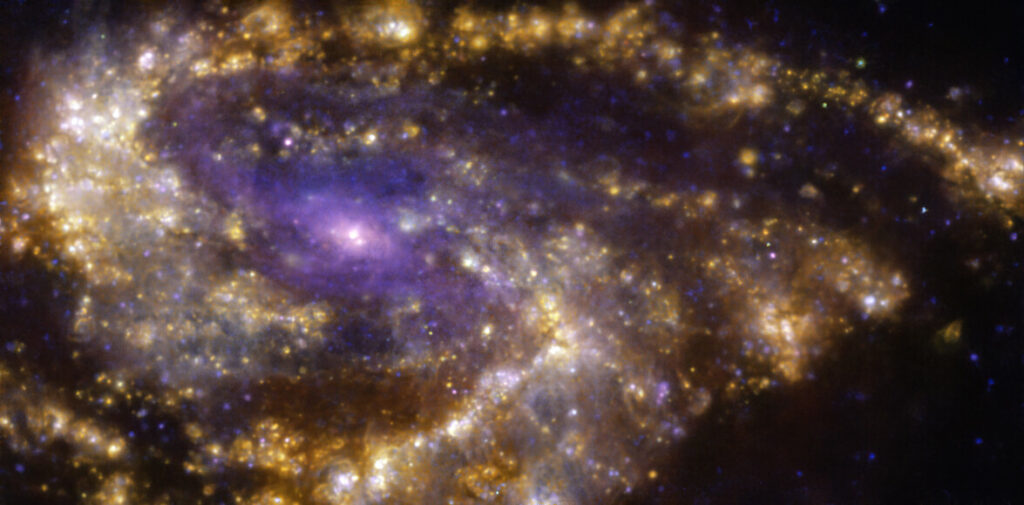This impressive image taken by the ESO’s Very Large Telescope (VLT) captures the spiral galaxy NGC 3627, also known by the designation M66. It is located at a distance of 31 million light years from Earth in the constellation Leo.

The diameter of NGC 3627 is 100 thousand light years, which is comparable to the diameter of our Milky Way. It is part of the so-called Leo triplet — a group of three spiral galaxies, which in turn may be part of a larger cluster. Another interesting fact about NGC 3627 is that three supernovae have flared up in it over the past quarter century.
You can note that the colors in the VLT image are not similar to the usual photos of deep space objects like those made by the Hubble telescope. This is due to the fact that we have a composite image in front of us. It was obtained during observations at different wavelengths. The colors show the location of gas clusters ionized by newborn stars and their chemical composition. Red corresponds to hydrogen, blue to oxygen, orange to sulfur.
The NGC 3627 image was obtained as part of the PHANGS project (Physics at High Angular resolution in Nearby GalaxieS). Its goal is to gain an understanding of what exactly initiates, accelerates or, conversely, slows down the formation of new luminaries in various interstellar environments.
Earlier, we talked about how VLT helped astronomers discover the flashes of micronovae.
According to https://www.eso.org
Follow us on Twitter to get the most interesting space news in time
https://twitter.com/ust_magazine
